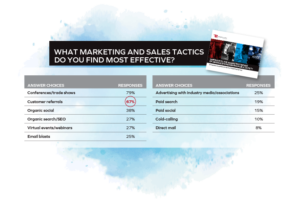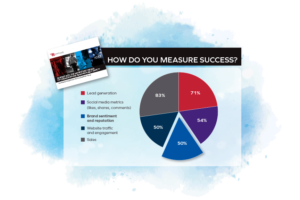What You Need to Know About Working with an Outside Firm

We all have strengths and weaknesses. No one is a master of all things (and if you find someone who is I think you found yourself an embellisher). Similarly, your marketing team can’t be expected to offer an expertise in every realm of marketing nor in each market your organization serves. So, the universe invented agencies.
Working with an outside firm can serve as bolt-on help with communication channels and industry expertise. They will augment your internal marketing team if you have one, or serve as your full throttle marketing department if you don’t. But how do you know when to bring on a marketing agency? What should you look for in a “right fit” partner? How can you smoothly enter them into the fold?
Here are some best practices for working with a marketing contractor to ensure you have a successful engagement.
Determine The Kind of Support You Need
You think you need an agency. Why? Spend some time firming up the reasons why you need help and what those areas are. This is important so that your efforts identifying an agency are put to good use in bringing in a “right fit” partner.
They should have skills complementary to those of your own marketing staff, not duplicative. For example, let’s say you and your marketing team know the fire industry well, but not EMS. However, your organization will be launching a new product or service that breaks into the EMS market. Look for an agency that can step in and do the work while guiding your team on how to market to EMS audiences. They’ll know best which tactics and language are most effective. They can help you navigate messaging nuances, which key buyers and influencers you should be targeting, and how to engage them.
Have a team with digital chops but struggling to craft compelling content? Find an agency that can help you bridge the gap and plug into your team so that content and digital strategy thrive in a symbiotic relationship.
If you don’t have a marketing team, look for an agency that can step in on all levels, from VP-level strategy to tactical implementation. And if you have a mid-level marketing manager, they likely also need support developing big-ticket strategy and executing tactical activities.
Don’t Forget About Culture
Cultural fit matters when you’re hiring an employee and it matters when you’re looking to bring on an outside firm. The extent to which culture can vary from organization to organization is significant– levels of formality in communication, views of hierarchy, tech maturity, positions on confrontation/conflict, approaches to buy-in and decision making, attitudes about risk, and the list goes on.
Keep those things in mind when you’re looking for an agency that’s as culturally aligned with you as possible. You may even consider asking what their organization’s mission or values are to help with that assessment.
Just like with dating, the success of this partnership requires you to have your eyes wide open to recognize that “fit,” or lack thereof. Take note of the cultural implications revealed during early email communication and discovery calls. Are they transparent about what they do and don’t have an expertise in? And honest about what they could deliver and when? Are they asking good questions that get to the core of your objectives? Do they interact well together?
The more you’re a fit on some core tenets of culture, the more likely you’ll enjoy an undercurrent of understanding and be able to work together effectively.
Clarify Engagement Goals
Make sure all parties – your marketing team, internal stakeholders, and agency contact – are aware of and in agreement on the objectives of your engagement. The earlier this is done, the better. And bonus points for being as specific as possible. It’s critical to identify the key activities you’ll focus on so everyone knows what they’re working toward. And just as importantly, what they shouldn’t spend time, energy and resources on (things that don’t map back to your goals).
New needs will arise and that’s ok. It’s easier to shift gears when you know where you’re shifting from. And it’s important that everyone is flexible enough to adjust for new opportunities or challenges as they come up (ahem – pandemic for instance). But start out with clear initial goals and an understanding of how success will be measured.
Identify Interaction Channels
Map out a clear path for interaction. ID roles, swim lanes and points of contact on each side to streamline communication.
Remember-you are paying for an agency’s time, so it’s worth getting organized internally to make the most of everyone’s time (your budget). Pinpointing a single point of contact (POC) who will collate feedback from your team, coordinate activities and meetings, and be the agency’s “go-to” for all of this interaction makes a huge difference in maximizing efficiency and therefore budget.
Having too many people cc’d on emails, joining meetings, and weighing in with contradictory feedback will frustrate everyone and likely blow your budget. A POC prevents this and allows everyone to stay focused on the work they do best. Be clear on the approval process and who needs to be involved with ideating, creating and reviewing work. This helps ensure the development process running smoothly.
Tip – the shorter the approval chain, the further your dollar goes.
It’s also important to agree on communication tools. Will email be the main form of interaction or will there be a team Slack channel, for instance? Which channel will be used for deliverable approvals or new ideas vs. meeting coordination?
It takes a while to get to know each other and establish a good working rhythm, so give everyone (including your own team) a little grace as you go through the onboarding process.
Communicate, Communicate, Communicate
Consider the agency an extension of your team. Teams collaborate, share information regularly, and root for the success of the group as a whole.
This means you’ll need to start looking at your marketing activities through a new lens. On a regular basis, you should ask yourself whether your agency needs to be aware of, and weigh in on, the activities you have cooking.
Example – You have a long-term sponsor relationship with a major public safety association. Alert your agency of your activities and plans, ask for any fresh perspectives, and go along on your merry way. But be open when your agency suggests running point on securing added value for a sponsorship at a conference that your organization hasn’t sponsored before.
Embrace Unchartered Territory
Lean into fresh perspectives and outsider recommendations from your agency. They’ve been brought in to help you succeed and though their fresh perspective may include a direction you haven’t considered yet, embrace the possibilities.
Be open to feedback and ideas, even if they aren’t 100% informed – it would take a long time for them to know your organization as well as you do. Keep in mind that your target audiences certainly won’t know your organization as well as you do either. Input from an agency that knows the industry and isn’t as “close” to your products and services can be very valuable.
Your agency may suggest that some activities you’re executing may not be the best route, have new ideas that refocus your approach, or recommend revised messaging to better appeal to your target audiences. Hear them out. And reassure your own marketing team that new ideas are what you’re after to boost results. This will help calm any nerves they may have of looking bad and keep the collaboration positive. You’re all on the same team after all.
Plan a Goals Reset
Carve out time to meet with your marketing team and agency every 3-6 months to realign goals and vision, look for new opportunities and assess market changes that may require adjustments in strategy. Coming together for this reset helps everyone stay fresh in your approach and campaigns.
Your agency wants to do great work for you. That’s why creative types and strategic minds get into this business – they’re invigorated by new challenges and want to dazzle clients. Their objective is to use your budget wisely, develop winning strategies, and execute fabulous solutions for you – not get bogged down by the cautionary tales shared above.
Make time for these important steps to lay the groundwork for a successful engagement. They will help you build a true partnership with your agency and set your collaboration on a path to success.
Go forth into the universe and do great things together.
Related Posts
-
In the busy world of marketing, it can be tempting to push projects forward to…
-
If you’re like most companies, you’re taking a hard look at your marketing budget and…
-
Has your organization recently dived into the world of public safety? Or maybe you’re a…









 The RedFlash Group is a GSA Contract Holder under Schedule 541, Advertising and Integrated Marketing Solutions
The RedFlash Group is a GSA Contract Holder under Schedule 541, Advertising and Integrated Marketing Solutions